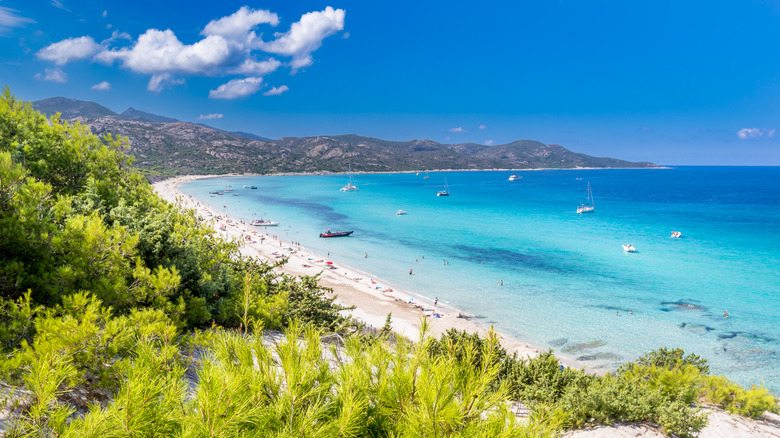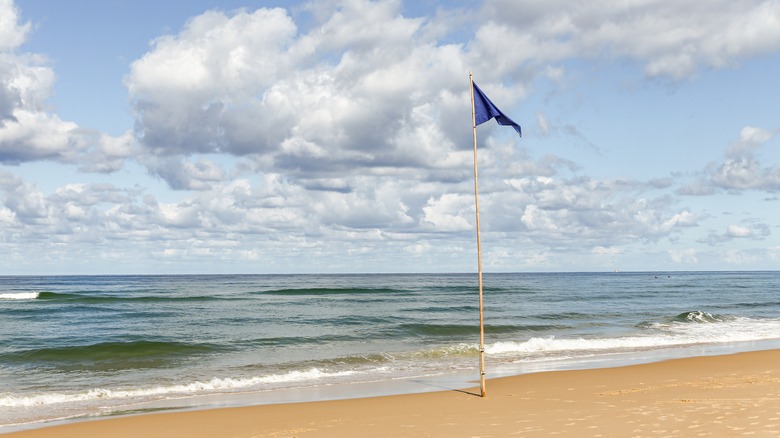Ignoring This Important Safety Measure On France's Beaches Could Be Very Dangerous
France's coastline stretches for thousands of miles — from the seaside town of Dunkirk to the breathtaking beaches known for turquoise waters along the French Riviera. But as tempting as it is to dive straight into the surf, beachgoers should always keep an eye out for one important feature: beach flags. French beaches use a color-coded flag system to indicate swimming conditions, and ignoring them can turn a relaxing beach day into a dangerous situation. Lifeguards and local authorities raise these flags each day based on the tides, currents, weather, and other factors.
A green flag means calm conditions and a lifeguard on duty — so swimming is as safe as it gets. An orange or yellow flag means swimming is allowed but conditions are risky, maybe because of stronger currents. (Here's how to spot rip currents during your beach vacation.) A red flag is a no-go. Red means swimming is strictly prohibited, often due to large surf, storms, or even unwanted beach guests like jellyfish. Lastly, a purple flag indicates there may be harmful pollution affecting the water quality.
Tourists unfamiliar with these rules — or too eager to go into the water regardless of the flag flying — can end up caught in rip currents or in need of a rescue team. French authorities have recently reminded everyone to follow these flag guidelines to stay safe, especially after there were 145 sea drownings reported from June to September in 2024. This tried-and-true system is an efficient way to keep beachgoers safe in and out of the water throughout their holiday.
Decoding flags and signals on French beaches
France's beaches are stunning, and they're also thoughtfully managed. Once you spot a color-coded flag on a French beach, you may think you've got the system figured out. But look closer, and you'll notice there's more going on than just red, yellow, or green. In fact, most monitored beaches in France have three separate flag masts, each offering different info.
The central mast is the one swimmers tend to focus on — that's where you'll find the triangular sea-condition flags: green for calm, orange/yellow for windy but swimmable, and red for dangerous and off-limits. But to the west, a rectangular flag can demonstrate how strong the ground winds are, which is useful info for anyone planning on windsurfing, kitesurfing, or kayaking. On the east mast, a blue or yellow flag indicates the water quality — blue means good, while yellow means you may want to reconsider your swimming plans. Swimmers should also look for zone markers. Two blue flags typically define the safe bathing area, while surfers, jet-skiers, and bodyboarders are directed to their own sections further offshore. These distinctions help keep everyone safe and enjoying their time on the water.
Note that lifeguard coverage can vary. Most public beaches, especially in peak season, are supervised by trained lifeguards (sauveteurs), anywhere from April to September and usually from 10 a.m. to 7 p.m. But you can always check posted signs or ask at the tourist office to confirm that lifeguards are on duty. Families may want to search for beaches with the "Station Kid" label, which offer kid-focused fun and family amenities. And if you're looking for accessibility, the "Handiplage" logo points out beaches equipped for visitors with disabilities — complete with rolling walkways, accessible parking, and buzzer alerts for the visually impaired.

